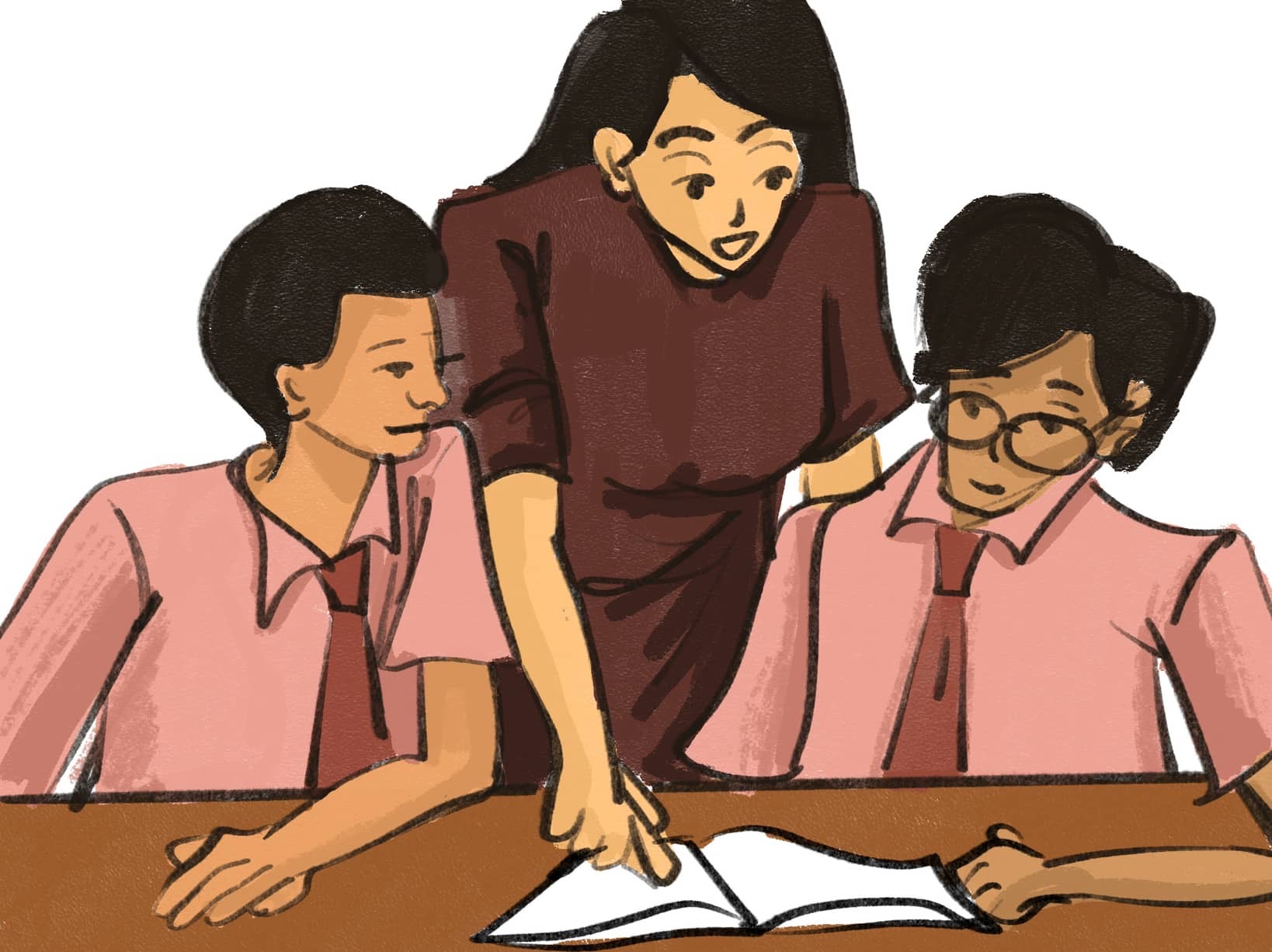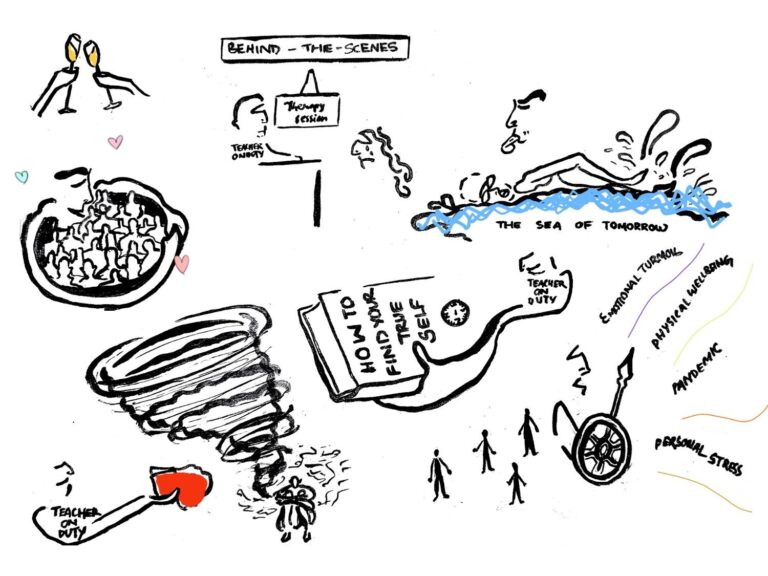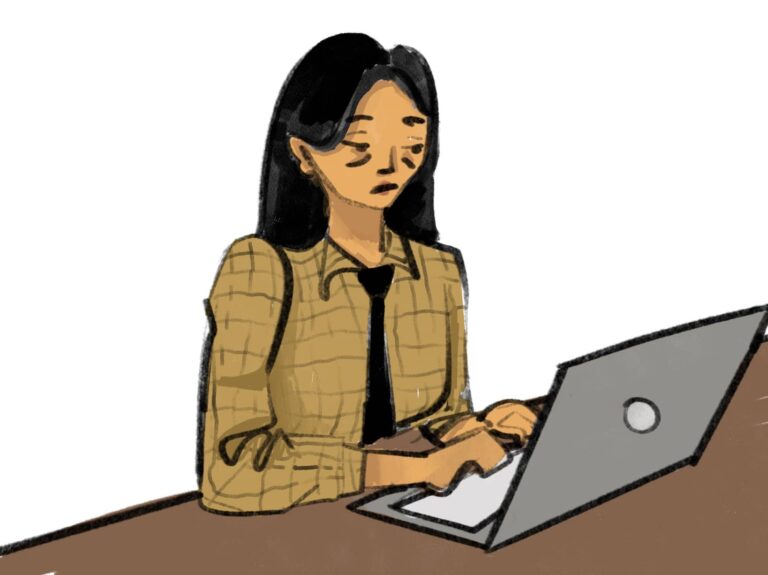How do our children need their education to be?

Divanshu & Samyak are the co-founders of Involve, an education social enterprise working towards the vision of developing agency in school students.
Visit the Markadhana cluster in the Chindwara district of Tribal Madhya Pradesh, and you will see something unusual. While schools have been closed on and off during Covid, one thing that has been consistent is the participation of students in the community centres. The older students have taken the charge to bridge the learning gap of the younger students while also learning on their own, taking the support of the community teacher. They have ensured that the younger learners ask a lot of questions when they teach; They have ensured that every student in their groups of 5 participates in the activities. They motivate them to come to class every day. For a stranger passing by, it would be difficult to believe that these students, who used to spend most of their time working in fields, and rarely attended school, are today the ones leading learning spaces for themselves and their peers! So what makes these students take ownership of their learning?
I studied in an affordable private school till the 8th grade. It was an English Medium school that didn’t have an English teacher for almost a year. Fortunately, I found a mentor in a retired Air force officer who would share interesting concepts with me and then would ask me to read various books to know more about them. The majority of my time post-school was spent there, where I would just explore new concepts. He wouldn’t teach, rather he would keep questioning me more to build on my learning. This was my first encounter with inquiry and purposeful learning. Fast forward 6 years, I was at IIT Madras, volunteering with Avanti fellows. As a manager of grade 11th students of JNV Pondicherry, I was entrusted with the responsibility to mentor these 25 students towards competitive exams (JEE mains and advanced) with the support of the undergrad students at IITM.
Because of certain challenges at the centre, the students didn’t have access to professional teaching for the foreseeable future, which worried me as it would significantly affect their motivation and academic progress. As I sat with my team to look for solutions, we all agreed to leverage the undergrads as well as the 12th graders to start teaching and supporting the 11th graders. This was the genesis of the idea of building students’ communities to solve problems in the classroom (academics/non-academics). That year, we had 100% of our students clear JEE Mains, an astounding feat by any means. It led us to think further if the power of cross-age peer tutoring could be leveraged in K-12 schools, given the diversity of students we had there.
Samyak and I piloted a peer teaching model in a school in Delhi in the summer of 2016 where students from 7th-9th grade, student leaders, were selected to bridge the grade level gap of students from 4-8th during the summer vacation. Starting with a brief training program and fortnightly support to the student leaders, these leaders would then teach arithmetic and science to juniors. In a span of just 8 weeks, we saw a 39% improvement in the baseline scores of junior students. What was more surprising for us was the kind of impact the program had made on the leaders. Their hold on the academic subjects & clarity towards education improved drastically. Some of the leaders went on to apologize to their class teachers, now understanding how difficult teaching was. A large majority of them continued to mentor their juniors post the program, having understood their responsibility.
This brings me back to the question in the first para. What made these students so responsible and take ownership of not just their learning but also of their peers?
“Tell me, and I forget; Teach me, and I remember; Involve me, and I learn”
Benjamin Franklin
The purpose of education isn’t to instruct students to memorize but rather to let them learn. It is clear that active processing of information, not passive reception of information, leads to learning. That is, students must construct their own understanding of concepts, relationships, and procedures. Given the limited bandwidth of teachers in the classrooms, they are often rushed to complete the syllabus in the easiest manner possible rather than actively engage students in the learning process. The curriculum is packed with so much content that, to “cover the content,” teachers resort to telling students what they know, and students simply commit facts to memory. The packed curriculum leaves little time for students to acquire a deep understanding of the subject or to develop lifelong skills such as critical thinking, problem-solving, and communication.
To add to this, our societal persona of a school-going student (age 8-16) has always been about someone who is irresponsible, who can’t make the right decisions, and who is doomed to fail unless handheld. And hence, teachers, as well as parents, ensure that the students follow their instructions to the tee without applying their own brains. This makes our students mere instruction followers and passive participants of the education system, while they should be doing the exact opposite. Peer-based learning, on the other hand, reinforces the learning and creates active participation from the students. The Peer leader is excited about this role because he/she is entrusted with the responsibility of improving a peer, something which is age appropriate and challenging at the same time. To quote David Boud, author of “Peer learning in higher education”,
Students learn a great deal by explaining their ideas to others and by participating in activities in which they can learn from their peers. They develop skills in organizing and planning, working collaboratively with others, and by giving and receiving feedback.”
In Peer-based learning, the act of sharing knowledge pushes the leader to think deeper; he/she in wanting to help their peers, attempts to provide the most elaborate response. By sharing the response with his teammates, the student sees various ways to solve a problem and finds diverse ways to explain the content to their peers based on individual needs. It creates a culture of learning in schools that is not completely dependent on teachers and has students as a system of support for each other. Rubin and Herbert (1998) have shown that Peer teaching/learning leads to an increase in social and intellectual awareness and significant gains in empathy. It is also recognized to help change habitual patterns of behavior among students; and finally, that peer teaching empowers students, increasing their sense of mastery and self-esteem. They conclude that it would be hard to think of another method that would enable so much intellectual, social and personal growth.
After the successful pilot in Delhi, we went on to study various alternative pedagogies over the next 18 months. After learning and interacting with various educators and education entrepreneurs, we co-founded Involve, an organization that would institutionalize Peer-based pedagogies as a part of classroom learning, create programs that are student-centric, and improve their agency in learning. In the last 4 years, we have worked across 100+ schools and community centres in both urban and rural settings, impacting over 10,000 students. The use of peer teaching was instrumental in the re-engagement of a number of disengaged students and in bringing them to grade-level learning. Functioning as peer teachers appeared to increase the self-esteem, motivation, and competence of these students, improving their responsibility, clarity, and commitment to their education. Additionally, both sets of students improved significantly in their confidence and communication, each showing a ~21% increase over our year-long program. We have also been able to influence several organizations and schools to create programs that are student-centric and make students active participants in the learning process by leveraging peer learning.
So what’s next? Today, the National Education Policy recognizes the value of Peer learning in the classrooms and new-age learning. Over the next 5 years, we want to influence the ministry of education to allocate some time and space for students to learn from each other; We will work towards including peer learning as a part of training that is given to upcoming teachers. Above and all, we would aim to have at least one state adopt Peer-based learning to improve academic outcomes and agency in school students by 2026!
(In the video; a student leader is teaching a group of student learners in one of the Kutirs, MP)









Reach out to us at [email protected] as we are open to sharing all the learnings, documents that we have for anyone to use. We aim to grow and expand the idea, and not Involve.